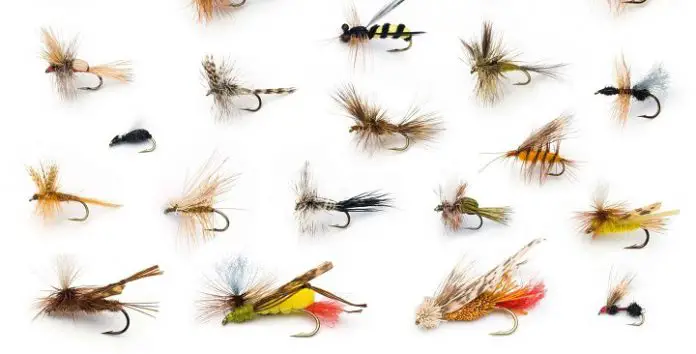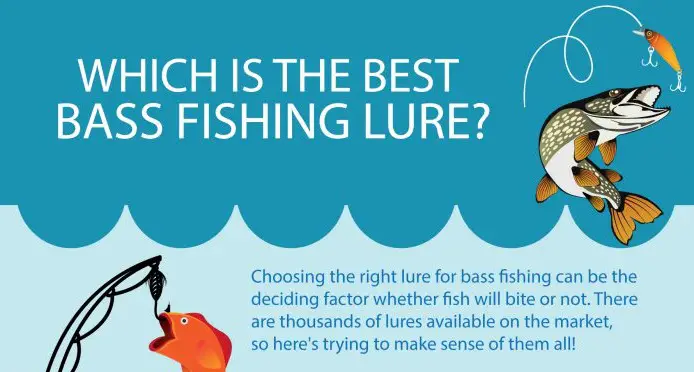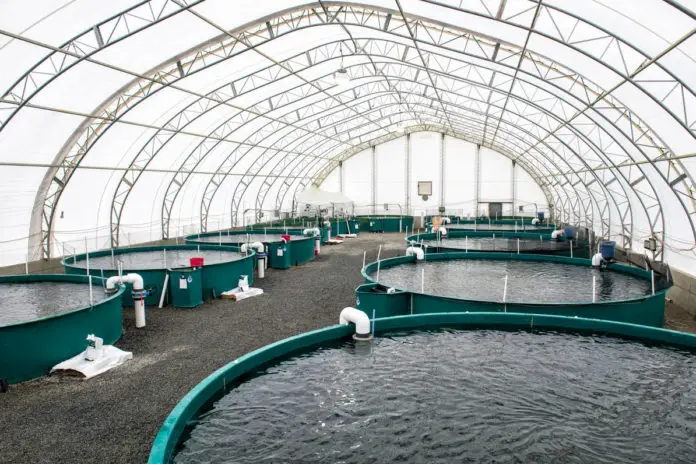For this post, I invited Bill Bernhardt, a professional guide and instructor with over 15 years of fishing experience to share a method he developed to drastically reduce the number of flies you need to take with you.
Table of Contents
Introduction
From today onwards, you’ll never have to take multiple fly boxes with you when you go fishing anymore.
In fact, you’ll be able to fit everything you need in your fishing vest, without making it feel like a backpack!
And all the while, you’ll still be able to catch just as many fish, if not more.
How the Three Color Attractor and Six Color Imitator method lets me catch trout anytime of the year
15 years of experience has taught me that there are a few specific colors of attractor and imitator flies that trout will just jump at. I was able to drop so many flies from my tackle box this way and it made my fly fishing so much easier and more relaxed. I no longer have to manage those pesky aquatic insect charts, either.
The three attractors and six imitators are pretty much what you need to get trout to bite all year round.
Recommended Trout Flies:
Let’s get into the nitty gritty, then, shall we?
How we ended up with so many flies (a short history)
Although we have records of the art of fly fishing dating back as far as the Roman Empire, most fly fishing historians agree that the art of fly fishing was truly developed by the English who observed large brown trout feeding on mayflies in their local chalk streams.
Being the inventive and enterprising folk they were, the English people used hand-forged, iron hooks which they then wrapped with bits of fur and feathers in an attempt to create an artificial insect that appeared enough like a real insect to fool the trout into striking it.
From there, they eventually developed long “spey” rods made from multiple types of wood along with silk fly lines and leaders made from animal intestine as outlined by Dame Juliana Berners in her Treatyse on Fysshynge Wyth an Angle which was published in The Boke of St. Albans in 1486.
This heritage is still with us today and, in fact, most any modern book you choose to read on the topic of fly fishing will instill in you the mantra of “match the hatch”.
Consequently, this has led biologists to develop long lists of the family, genus, and species of aquatic insects that inhabit the trout streams in many regions of the world which enterprising fly fishermen have used to create local hatch charts.
Novice fly fisherman today are taught to consult these local hatch charts and choose a fly selection accordingly and then, once on the stream, to choose a fly from their selection that “matches the hatch” according to the species, size, and color of the insects that are hatching in that area during a given month.
However, this often leads to fly fishermen carrying multiple fly boxes in their fly fishing vests stuffed with all of the various fly patterns listed on their local hatch chart; many of which they never use.
But what if there was a way to simplify the approach to fly selection such that a fly fisherman could carry a single fly box containing generic patterns of dry flies, nymphs, or streamers that would enable him to catch trout anywhere in the world at any time of the year?
A fly fisherman’s odyssey
Like many novice fly fishermen, I too followed the time honored method of obtaining a local hatch chart and then set about collecting the many different fly patterns listed which, of course, also made it necessary for me to purchase numerous different fly boxes to hold them all.
Then, each time I would go fly fishing, I would approach the stream and spend some time observing the air above the stream as well as the streamside foliage and the current to see if I noticed any flies hatching and, if so, I would then capture one and note both its genus, size, and color.
Next, I would attempt to choose a fly from my extensive fly collection that would closely match the fly I had captured just as I had been taught.
Consequently, I eventually ended up carrying four or five different fly boxes stuffed to the brim with numerous different dry fly patterns which made my fly vest so heavy and bulky that I often felt like I was wearing a backpack rather than a fly vest!
However, as I gained streamside experience, I began to notice that there were numerous fly patterns in my fly boxes that I never used despite them being listed on my local hatch chart.
After spending fifteen years or so as an avid (or should I say fanatical?) fly fisherman as well as learning everything I could about the sport by reading every book on the topic that I could get my hands on, I eventually decided that I should endeavor to pass my knowledge and experience on to others who were interested in learning the sport.
So I decided to become a professional fly fishing guide and instructor which, in turn, enabled me to spend numerous hours each week on the stream observing the habits of both trout and the insects that they consume.
As I gained additonal knowledge and experience, I began to realize that so much of what I had read in all of those fly fishing books simply did not seem to apply to the southern Appalachian trout streams where I fish.
I eventually decided to discard all of the conventional knowledge that I had gained from reading all of those books and instead use my experience and streamside observations to develop my own method of fly selection.
Now, instead of carrying a whole fly shop’s worth of flies in my vest, I instead carry only four fly boxes which contain my dry fly patterns, my nymph patterns, my terrestrial patterns, and my streamer patterns.
The Three-Color Attractor System
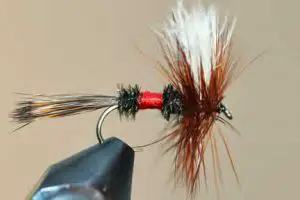
So, in an effort simplify my approach to fly selection, I started with the basic knowledge that trout flies are commonly divided into two different categories consisting of “attractors” and “imitators”.
For those of you who are not familiar with these terms, an “attractor” fly is a fly pattern such as the Royal Wulff (developed by a fellow angler named Lee Wulff) that is tied.
It uses bright colors that “attract” the trout and cause them to strike the fly even though it does not closely resemble any natural insect that exists in any trout stream anywhere.
On the other hand, an “imitator” fly is a fly pattern such as the Light Cahill that is instead tied using a much a more subtle color scheme that is designed to closely resemble a natural aquatic insect.
I combined this knowledge with the observation that trout in our local southern Appalachian trout streams seem to be highly attracted to the colors red, yellow, and green which, in turn, led me to develop something that I call the Three-Color Attractor System.
As the name implies, my Three-Color Attractor System consists of fly patterns that are predominately red, yellow, or green such as:
- the Royal Wulff (one of the most effective attractor fly patterns ever developed) which uses red floss combined with green peacock herl for the body and white Polar Bear fur for the wings,
- the Carolina Wullf which uses yellow floss instead of red, and
- the Tennessee Wullf which uses green floss or, the Humpy pattern in red, yellow, and green.
I combine those patterns with red, yellow, and green Elk Hair Caddis flies and red, yellow, and green Stimulator flies (even though both are technically considered to be imitator patterns) in sizes 12, 14, and 16 to complete my Three-Color Attractor System.
I use my attractor flies during periods when there are no insects presently hatching in order to entice the trout to strike my flies. In addition, it is helpful to realize that my three-color system can also be applied to nymphs in order to help you locate actively feeding fish that will not respond to a dry fly.
For instance, in order to create a three-color attractor system using nymphs, you could choose a Royal Wulff nymph, a Pheasant Tail Sulphur nymph, and a green Golden Ribbed Hair’s Ear nymph or, perhaps, a Firebug nymph, a Tellico nymph, and a Prince nymph.
Also, if you have Caddis Flies in your local waters, you might want to add a selection of Serendipity nymphs in red, yellow, and olive as well a selection of Copper John nymphs in red, copper, and green.
The Six-Color Imitator System
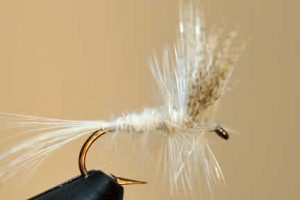
Although attractor patterns are very effective at catching trout during non-hatch periods, because trout are sight feeders and, because of a concept called the “Food vs. Energy Equation”, they quickly learn to differentiate between the family and genus of the various aquatic and terrestrial insects that occur in their locale.
They tend to become highly selective during periods when insects such a May Flies, Caddis Flies, Damsel Flies, Dobson Flies, or Stone Flies are hatching.
They then tend to ignore any fly that does not closely resemble the insects that they are presently feeding on in shape, size, and color. Therefore, many frustrated fly fisherman have endeavored to develop realistic fly patterns that closely resemble these insects which are called “imitator” patterns and of which there is a seemingly infinite variety.
Rather than consult a local hatch chart and then purchase several dozen different fly patterns in order to imitate the various species of aquatic insects that inhabit the trout streams in a given region, I have instead developed a second fly selection system that I call the Six-Color Imitator System.
Again starting with the observation that the very large majority of the flies that I see on our local trout streams regardless of family or genus tend to predominately display one of six different colors consisting of cream, yellow, green, grey, brown, or black, I developed my Six-Color Imitator System to include the Light Cahill, the Sulphur Dun, the Blue Winged Olive, the Female Adams, the March Brown, and the Black Gnat fly patterns in sizes 12, 14, and 16.
In addition, most swiftly flowing streams here in the Southeast harbor large populations of Caddis Flies and thus, a selection of Elk Hair Caddis patterns in cinnamon, yellow, olive, gray, brown, and black is also very handy to have. Plus, my Six-Color Imitator System can also be applied to nymphs by including a Light Cahill nymph, a Pheasant Tail Sulphur nymph, a green Golden Ribbed Hair’s Ear nymph, an Adams nymph, a March Brown nymph, and a black Golden Ribbed Hair’s Ear nymph.
By observing the family, genus, size, and color of the flies that are hatching on the rare occasions that I actually run across a hatch, I can usually select a fly from my Six-Color Imitator System that resembles the hatching insects closely enough to fool the trout without having to resort to carrying enough specific fly patterns to supply a whole horde of fly fishermen.
Terrestrial and Streamer Fly Selection
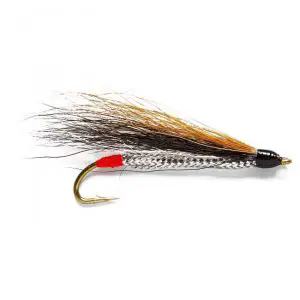
It has also been my experience that despite the plethora of May Fly nymphs, Stone Fly nymphs, Dobson Fly nymphs, and Caddis Fly larva I see inhabiting the substrate in our local trout streams, I very seldom see a hatch of any insect coming off during the day on our local waters.
In fact, on the rare occasions that I do see a hatch coming off, it’s usually either just after dawn or just before dusk. In addition, when I seine the current during the day, I very seldom capture either May Fly, Stone Fly, or Dobson Fly nymphs or Caddis Fly larvae.
Consequently, this leads me to believe that there is commonly very little nymphal drift present in southern Appalachian trout streams during the day and thus, terrestrial insects, forage fish, crustaceans, and even mollusks are an important food source for trout in our local waters.
So it is also a wise idea to carry a small fly box containing grasshopper, cricket, yellow jacket, cicada, beetle, ant, and inchworm patterns in addition to the Three-Color Attractor System and the Six-Color Imitator System mentioned above.
It should also be noted that both the Black Gnat and black Humpy patterns serve as a passable imitation of a common House Fly which seems to be present everywhere.
In addition, trout also feed avidly on forage fish such as Darters, Dace, Sculpins, and even juvenile Trout. I would suggest that you carry Black Nosed Dace patterns to imitate Dace and Darters, Conehead Muddler Minnows to imitate Sculpins, Royal Wulffs and/or Spruce Flies to imitate juvenile Chubs, Enrico’s Trout Streamer to imitate juvenile Smallmouth Bass, and both Dark and Light Edison Yellow Tigers as well as Black Ghosts and Mickey Finns for use as attractor flies.
Last, it should also be noted that trout tend to view crayfish in the same way that humans view steak and thus, carrying a selection of small crayfish flies is also an excellent idea.
Conclusion
So, if you are a novice just now entering the sport of fly fishing and are confused by the myriad of fly patterns available or, if you are simply one of those fly fishermen who has more flies than you know what to do with, then you might want to give my simple approach to trout fly selection a try.
The entire dry fly system can be contained in a single 18 compartment box for the larger flies and a single 12 compartment box for the smaller flies. Also, by applying this system to nymphs and steamers as well, you can drastically reduce your fly selection to a simple, compact, system that occupies far less room in you fly vest than the traditional approach of carrying specific fly patterns to imitate specific species of aquatic insects.
























